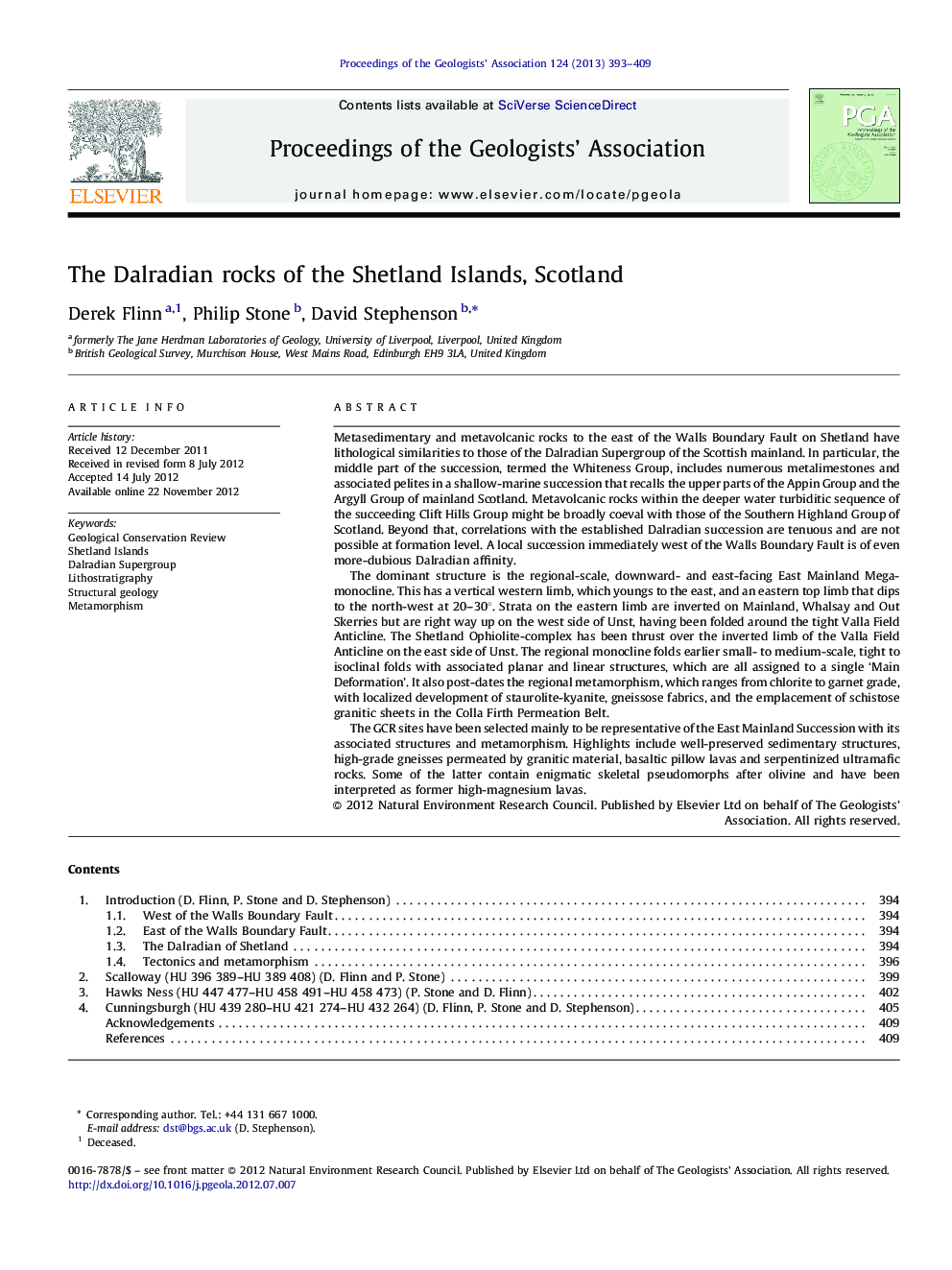| کد مقاله | کد نشریه | سال انتشار | مقاله انگلیسی | نسخه تمام متن |
|---|---|---|---|---|
| 4734705 | 1640660 | 2013 | 17 صفحه PDF | دانلود رایگان |
Metasedimentary and metavolcanic rocks to the east of the Walls Boundary Fault on Shetland have lithological similarities to those of the Dalradian Supergroup of the Scottish mainland. In particular, the middle part of the succession, termed the Whiteness Group, includes numerous metalimestones and associated pelites in a shallow-marine succession that recalls the upper parts of the Appin Group and the Argyll Group of mainland Scotland. Metavolcanic rocks within the deeper water turbiditic sequence of the succeeding Clift Hills Group might be broadly coeval with those of the Southern Highland Group of Scotland. Beyond that, correlations with the established Dalradian succession are tenuous and are not possible at formation level. A local succession immediately west of the Walls Boundary Fault is of even more-dubious Dalradian affinity.The dominant structure is the regional-scale, downward- and east-facing East Mainland Mega-monocline. This has a vertical western limb, which youngs to the east, and an eastern top limb that dips to the north-west at 20–30°. Strata on the eastern limb are inverted on Mainland, Whalsay and Out Skerries but are right way up on the west side of Unst, having been folded around the tight Valla Field Anticline. The Shetland Ophiolite-complex has been thrust over the inverted limb of the Valla Field Anticline on the east side of Unst. The regional monocline folds earlier small- to medium-scale, tight to isoclinal folds with associated planar and linear structures, which are all assigned to a single ‘Main Deformation’. It also post-dates the regional metamorphism, which ranges from chlorite to garnet grade, with localized development of staurolite-kyanite, gneissose fabrics, and the emplacement of schistose granitic sheets in the Colla Firth Permeation Belt.The GCR sites have been selected mainly to be representative of the East Mainland Succession with its associated structures and metamorphism. Highlights include well-preserved sedimentary structures, high-grade gneisses permeated by granitic material, basaltic pillow lavas and serpentinized ultramafic rocks. Some of the latter contain enigmatic skeletal pseudomorphs after olivine and have been interpreted as former high-magnesium lavas.
Journal: Proceedings of the Geologists' Association - Volume 124, Issues 1–2, January 2013, Pages 393–409
